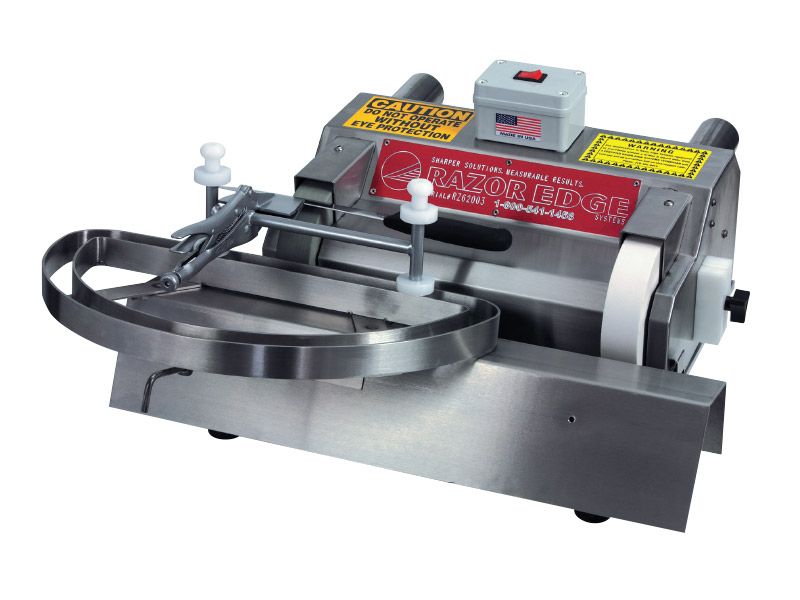If you’re a home cook, a chef or a butcher, the sharpness of your knives plays a crucial role. A well-sharpened knife enhances precision, safety, and efficiency, while a dull blade can make cutting a chore and increase the risk of accidents. Mastering sharpening techniques is essential for maintaining your knives in optimal condition. That is why it’s important to learn about various sharpening methods, the role of sharpening stones, and where to buy knife sharpening tools in South Africa.
Understanding Knife Sharpening
Knife sharpening involves honing the blade’s edge to restore its sharpness and precision. Over time, even the highest-quality knives will become dull due to regular use, but sharpening can bring them back to a razor-like edge. Sharpening not only improves performance but also prolongs the knife’s lifespan by preventing damage caused by using a dull blade.
Sharpening Stones: The Classic Choice
Sharpening stones, also known as whetstones, have been a traditional method for honing knives for centuries. They are a preferred choice for many chefs and enthusiasts due to their effectiveness and versatility.
1. Types of Sharpening Stones
- Water Stones. These require soaking in water before use and provide a fine edge. They come in various grits, from coarse to fine, allowing for both sharpening and honing.
- Oil Stones. Used with a lubricating oil, these stones are durable and maintain their shape well. They are effective for sharpening and are commonly used for high-carbon steel knives.
- Diamond Stones. Featuring a diamond-coated surface, these stones are extremely hard and fast-cutting. They are ideal for very dull or damaged blades and require minimal maintenance.
2. How to Use Sharpening Stones
- For water stones, soak them in water for about 10-15 minutes before use. For oil stones, apply a few drops of honing oil to the surface.
- Sharpening Technique. Hold the knife at the correct angle (typically 15-20 degrees) and draw the blade across the stone in a sweeping motion, covering the entire edge. Repeat on both sides of the blade to ensure an even sharpness.
- Regularly flatten your sharpening stone with a stone dresser to maintain its effectiveness and avoid uneven wear.
Alternative Sharpening Methods
While sharpening stones are highly effective, there are other methods available that may suit different preferences and needs:
- Manual Sharpeners. These are compact, user-friendly devices that use pre-set angles to guide the sharpening process. They are convenient for quick touch-ups and are often more accessible for beginners.
- Electric Sharpeners. These machines offer an automatic sharpening process, with adjustable settings to accommodate different blade types and angles. They are ideal for those who prefer a more hands-off approach but can be less precise than manual methods.
- Honing Rods. Also known as sharpening steels, honing rods are used to maintain the blade’s edge between sharpening sessions. They realign the microscopic teeth of the blade and are often used in conjunction with other sharpening tools.
Where to Buy Knife Sharpening Tools in South Africa
For South African consumers, there are several options for purchasing knife sharpening tools. Whether you are looking for sharpening stones, manual sharpeners, or electric devices, you can find a range of products to meet your needs.
- Local Retail Stores. Many hardware and kitchenware stores across South Africa stock knife sharpening tools. Stores like Makro, Builders Warehouse, and Checkers often have a selection of sharpening stones and other equipment.
- Specialty Shops. For a more specialised selection, consider visiting stores that focus on culinary tools and accessories. Shops such as Yuppiechef and The Butcher’s Shop offer high-quality sharpening stones and kits tailored for both amateur cooks and professional chefs.
- Online Retailers. Purchasing knife sharpening tools online provides the advantage of comparing different products and reading customer reviews. Websites like Takealot and Bidorbuy offer a variety of sharpening tools, including sharpening stones, manual sharpeners, and electric devices.
- Manufacturer Websites. Buying directly from the manufacturer or their authorized dealers can ensure the authenticity of the products. Brands like Chef’sChoice and Lansky have dedicated South African distributors that provide high-quality sharpening tools and customer support.
Tips for Effective Knife Sharpening
To achieve the best results from your sharpening efforts, follow these tips:
- Maintain a Consistent Angle. Keeping a consistent angle while sharpening is crucial for achieving an even edge. Many sharpening tools and stones come with guides to help maintain the correct angle.
- Sharpen Both Sides. Ensure you sharpen both sides of the blade evenly. Uneven sharpening can lead to an imbalanced edge, affecting performance and safety.
- Test the Sharpness. After sharpening, test the knife’s sharpness by slicing through a piece of paper or checking for smooth cuts. A sharp blade should glide effortlessly through the material.
- Regular Maintenance. Incorporate regular sharpening into your knife care routine. Frequent touch-ups with a honing rod can help maintain the blade’s edge between more thorough sharpenings.
Conclusion: Sharpened Knives Perform Better
Mastering the art of knife sharpening enhances your culinary skills and ensures that your knives remain effective and safe to use. By utilising sharpening stones, exploring alternative sharpening methods, and sourcing the right tools from reputable suppliers, you can keep your blades in peak condition. Whether you choose to shop locally or online, maintaining your knives with the appropriate sharpening techniques will contribute to a more efficient and enjoyable cooking experience.


